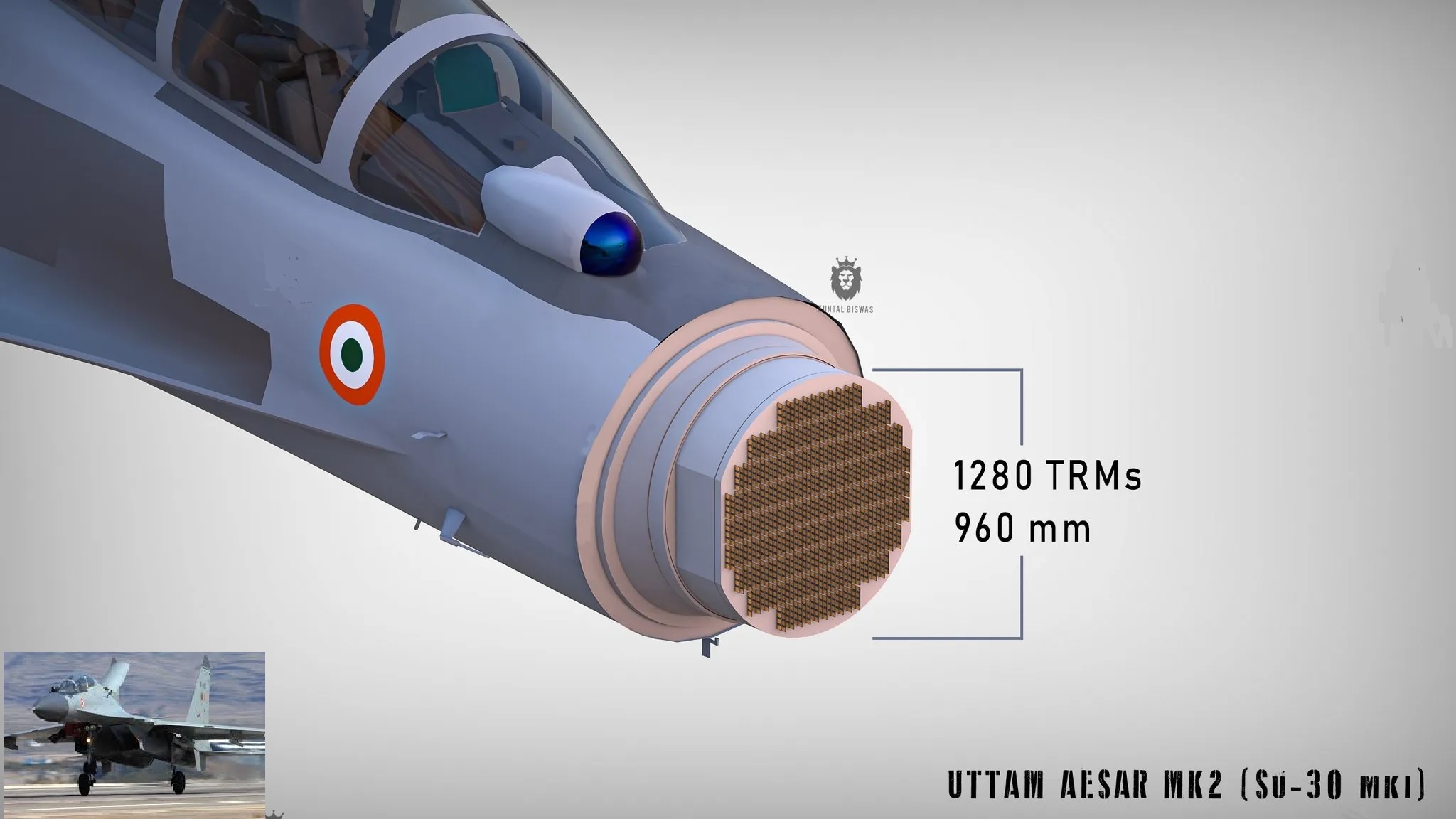HAL to Equip Sukhoi Su-30MKI with LRDE's Indigenous Uttam AESA Radars

In a significant move towards enhancing its air combat capabilities, the Indian Air Force (IAF) is set to upgrade its fleet of Sukhoi Su-30MKI fighter jets with the indigenous Uttam Active Electronically Scanned Array (AESA) radar, developed by the Electronics and Radar Development Establishment (LRDE). This upgrade is part of the ambitious Super Sukhoi program, aimed at modernizing the IAF's premier multi-role combat aircraft.
The Uttam radar represents a cutting-edge advancement in radar technology, incorporating Gallium Nitride (GaN) based components. This offers superior range, performance, and efficiency compared to traditional Gallium Arsenide (GaAs) based systems. The Su-30MKI, with its large nose cone, is ideally suited to house the radar's 1800 to 2200 Transmit/Receive (T/R) Modules, enabling significant improvements in detection and tracking capabilities.
The Super Sukhoi program is poised to overhaul approximately 150 out of the 260 operational Su-30MKIs, replacing their existing radars with the Uttam AESA system. This radar has already proven its mettle, having undergone 230 hours of airborne testing on Tejas fighter jets and an executive jet. The program's success is expected to greatly enhance the air superiority of the Su-30MKI fleet, positioning them as formidable assets in India's aerial defense strategy.
The Uttam AESA radar isn't limited to the Su-30MKI alone. It is also slated for integration into other key Indian air weapon systems, including the indigenous Tejas fighter jet and the upcoming HAL Advanced Medium Combat Aircraft (AMCA) stealth fighter project. With the completion of technology transfer, Hindustan Aeronautics Limited (HAL) will spearhead the production and integration of the radar, with an advanced variant known as 'Virupaksha' specifically tailored for the Su-30MKI post-upgrade.
In addition to the radar upgrade, the Super Sukhoi program encompasses a suite of enhancements aimed at bolstering the Su-30MKI's combat effectiveness. These include advanced munitions such as the indigenous anti-radiation missile RudraM and the long-range subsonic cruise missile Nirbhay, alongside anti-ship missiles and the extended-range BrahMos missiles. The aircraft will also receive a state-of-the-art cockpit with modern touchscreen displays, a new mission control computer, and a domestically produced AESA radar.
The cockpit upgrades will provide pilots with a more intuitive interface and enhanced situational awareness, while the new mission control computer will be capable of managing the sophisticated technologies and expanded weaponry. The integration of the 'Virupaksha' AESA radar is expected to significantly boost the Su-30MKI's surveillance and detection capabilities, making it a formidable contender in air-to-air combat.
Overall, the $7.5 billion Super Sukhoi program is a major stride towards indigenization and self-reliance in defense technology for India. By equipping its Su-30MKI fleet with the indigenous Uttam AESA radar and other advanced systems, India is poised to significantly strengthen its air combat capabilities, ensuring that its air force remains a powerful deterrent and a robust defensive force in the region.


